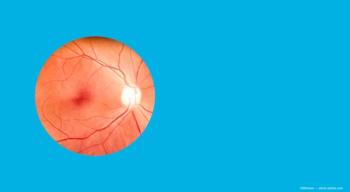
Studies support targeting IOP
Results from randomized controlled clinical trials investigating populations covering the spectrum from ocular hypertension to advanced glaucoma provide clear evidence that for most patients, glaucoma is an IOP-sensitive optic neuropathy for which lowering IOP is effective in slowing or arresting progression.
"In 1987, Drs. Eddy and Billings challenged the value of glaucoma treatment using IOP-lowering medications by asking how it compared with nothing at all. They stated that there was virtually no usable evidence about the effectiveness of medical treatment for glaucoma and even suggested the justification might be that the physician feels pressure to do something," said Dr. Skuta, president and CEO, Dean McGee Eye Institute, and Edward L Gaylord Professor and Chair, Department of Ophthalmology, University of Oklahoma, Oklahoma City.
"Now, findings from a series of randomized controlled trials support aiming for a 30% to 35% reduction in IOP, and perhaps even more in patients with more advanced glaucomas, as a target to prevent glaucoma progression. Clinicians should be thinking about risk assessment in patients with ocular hypertension. For patients with glaucoma, gaining better control of diurnal and long-term IOP fluctuations also seems to make sense."
Randomized, controlled trials
CNTGS was the first launched of the large, randomized, controlled glaucoma trials, and it was initiated at a time when it was still unclear whether NTG was an IOP-related optic neuropathy. Therefore, patients were randomly assigned to no treatment or IOP-lowering treatment with a target of 30% decrease in IOP. IOP remained about 16 mm Hg in the control group and was reduced by 37% from a baseline of 17 to 10.5 mm Hg in the treatment group. The proportion of patients who reached the endpoint of progression by optic disc or visual field changes was threefold higher in the controls compared with treated patients, 35% versus 12%, confirming the efficacy of IOP lowering.
Data from the OHTS and OHTS phase II showed a significant benefit of IOP-lowering for preventing the onset of glaucoma, even if initiation of medical treatment is delayed and despite setting a modest treatment target of just a 20% reduction in IOP. Additional analyses of OHTS data taught other lessons that are useful in daily practice, including the fact that approximately 50% of progression to glaucoma was based on a change in the optic disc without a detectable change in the visual field.
In addition, data from OHTS and the European Glaucoma Prevention Study identified risk factors for progression from OHT to glaucoma, including the importance of central corneal thickness, and led to the development of risk calculators that are useful for guiding treatment decisions for patients with OHT.
"OHTS taught us it pays to treat at least some patients with OHT, and risk calculators give us a better grasp of whom to treat," said Dr. Skuta.
In AGIS, in which patients with advanced glaucoma and already taking medical therapy were randomly assigned to treatment sequences beginning with either argon laser trabeculoplasty (ALT) or trabeculectomy, one of the major findings was that aggressive lowering of IOP could stabilize disease even in patients with significant glaucoma. In this study, patients whose IOPs were maintained at an average of around 12 mm Hg were largely protected against visual field progression.
The CIGTS randomly assigned patients with newly diagnosed open-angle glaucoma to initial medical therapy or initial trabeculectomy, and the results also showed the value of aggressive IOP lowering for these patients. Mean IOP lowering was 37% in the medically treated group and 46% in the surgical group, and at 5 years, visual field scores were similar in the two groups with both being generally well protected against glaucoma progression. At 8 years, substantial worsening (=3 dB of mean deviation) from baseline visual fields occurred in 21.3% of the surgical group and 25.5% of the medication group.
Newsletter
Don’t miss out—get Ophthalmology Times updates on the latest clinical advancements and expert interviews, straight to your inbox.



















































.png)


